Guitar World Verdict
The Blacktop is a fabulous, head-turning instrument that plays and sounds great in a variety of musical styles. It packs personality galore, too. The AD27, meanwhile, is a down home and earthy acoustic that’s brimming with bluesy vibe and, despite austere appointments, looks very cool.
Pros
- +
The Blacktop is particularly charming.
- +
Blacktop's versatility is superb,
- +
Both offer Taylor class at a more approachable price.
- +
Excellent build.
Cons
- -
AD27 lacks a little versatility.
- -
Blacktop is not for the shiny, pristine brigade.
You can trust Guitar World
Anyone who’s played a variety of acoustic guitars will have an opinion on where the various brands excel and where each one falls down. This might, of course, not always be accurate but, as they say, perception is the new reality.
So, while Taylor has a brilliant reputation for building top-quality, highly playable, reliable and technically advanced instruments, people don’t usually talk about the ‘Taylor sound’.
That’s perhaps because, historically, the company has created clear-toned, beautifully balanced instruments, but in ironing out the idiosyncrasies of past designs, it has arguably robbed its own creations of a distinct voice.
So, while the Gibson and Martin characters are pretty recognizable, the same can’t always be said of Taylor – or indeed many other top-flight modern acoustic brands. Taylor’s talented guru, master guitar designer and acoustical engineer Andy Powers, has gradually been addressing this situation, bringing in the V-Class bracing system and essentially rethinking the instruments from the ground up.
While Powers is keen to retain everything for which Taylor is rightly praised, he’s not afraid – with Bob Taylor’s active blessing – to radically re-examine things. It’s to this end, and with a little direction from COVID-19, that we see the emergence of the American Dream series.
Just as the depression of the 1930s and the havoc wrought by WWII caused the American guitar factories to amend their product lines due to materials shortages and financial hardship in the population, so the emergence of the Coronavirus has created similar circumstances.
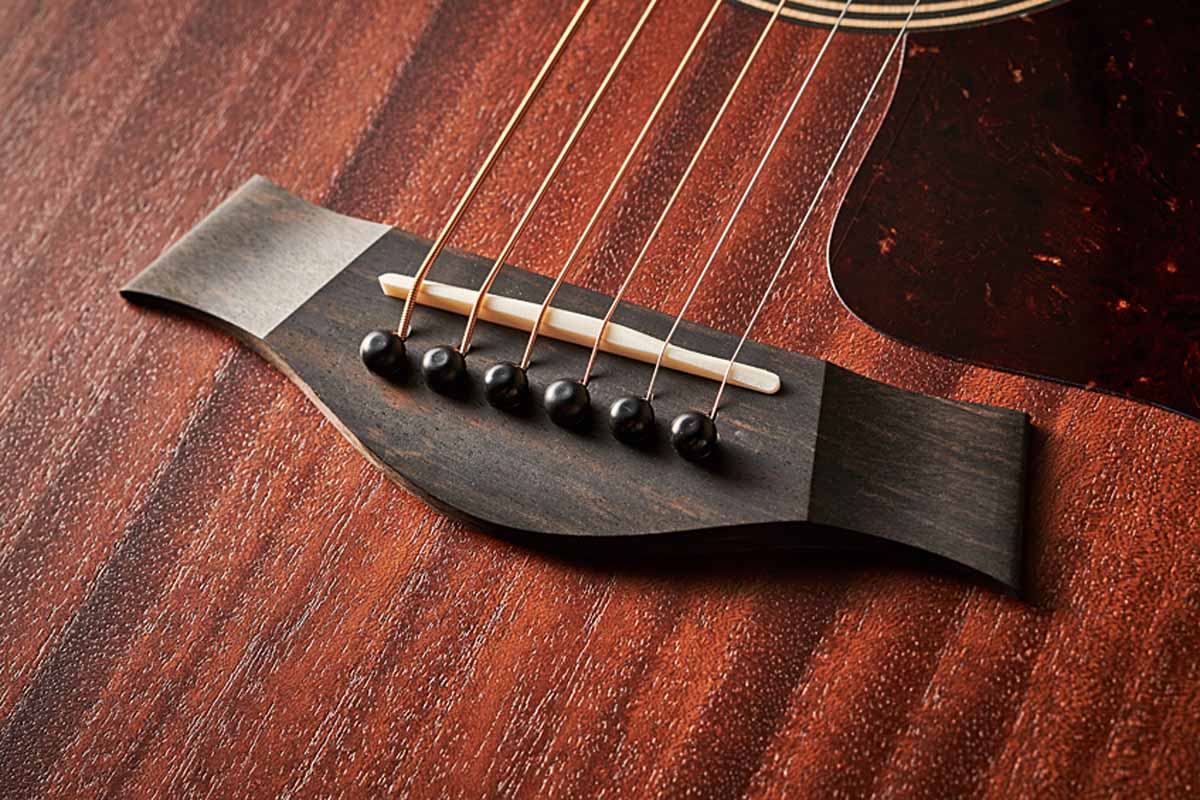
Taylor and Powers instantly clocked the situation and within a few short months created the American Dream. They call it “inventing our way out of a mess” and, you know what, they may well have hit the jackpot.
The American Dream currently comprises three acoustic instruments, each also available with Taylor’s innovative ES2 Expression System. They’re stripped down models that remove almost every cosmetic nicety while leaving the instruments looking not only purposeful but insanely attractive.
On review we have the AD17 Blacktop and AD27. The AD17 Blacktop and AD27 are essentially the same guitar, with solid ovangkol back and sides, mahogany neck, eucalyptus fingerboard, bridge and headstock veneer, and solid spruce top.
The sole difference is the ebony-finished soundboard of the Blacktop (also with black rather than tortoise pickguard) whose perimeter has been masked off to reveal the top’s edges and lift the guitar’s appearance.
A sapele body with mahogany top is all that marks out the AD27 as materially different from the other two, all three models employing the same neck and fingerboard.
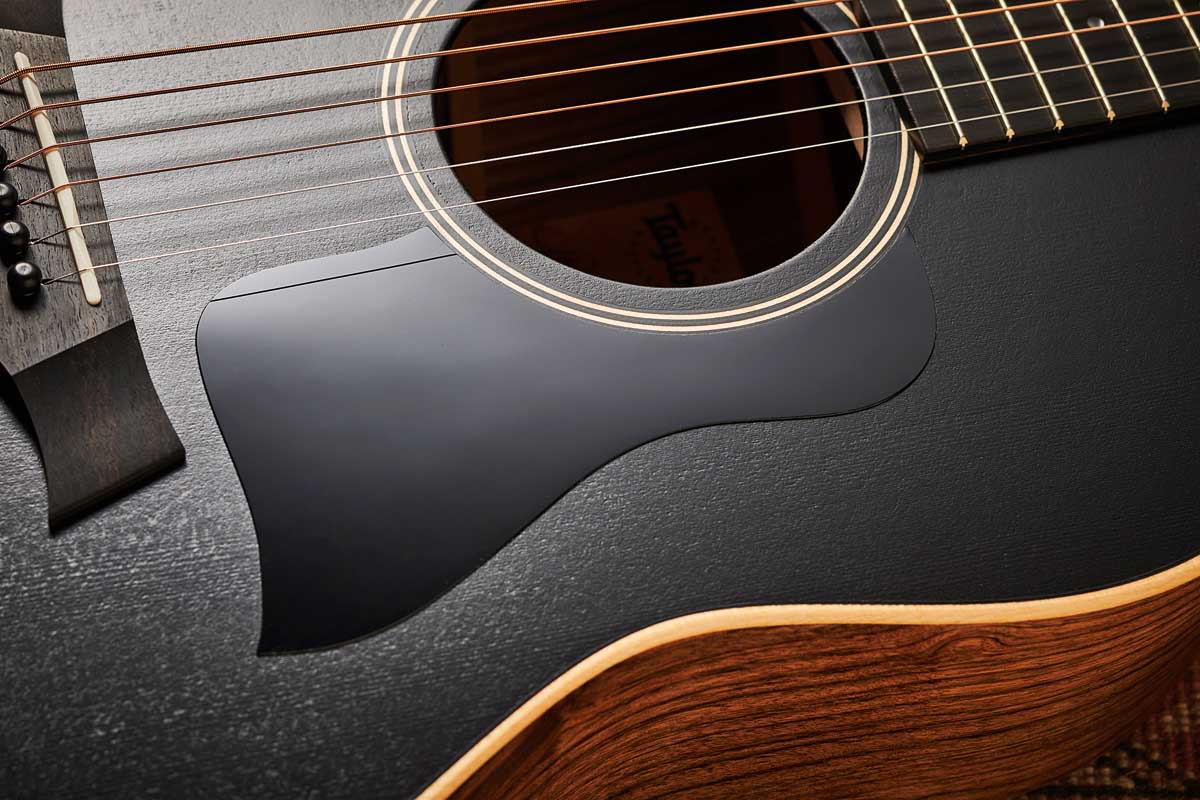
To underline these models’ designed-in austerity you’ll find no binding anywhere, the only eye candy being a basic soundhole rosette, small acrylic dot inlays, the Taylor headstock logo and black heel cap. But it’s this very simplicity that makes the ADs so darned attractive.
Visually, we would have preferred three-on-a-plate plastic-buttoned tuners over the individual enclosed machines that are fitted – but that may have bumped the price a tad too far.
With their stocky waist and slope-shouldered styling the ADs’ Grand Pacific shape puts us in mind of traditional classical guitar designs – or perhaps Lowden’s similarly fulsome outline
While the instruments are built with Taylor’s enviable precision, the company is happy to allow natural timber imperfections to shine through. Finishes are extremely thin but not buffed smooth, so sinkage into the grain is the order of the day.
Headstocks are scarf-jointed and heels added on in order to sensibly cut costs and not waste precious timbers. We applaud such moves as ecologically sound but they also add to the vibe of these instruments.
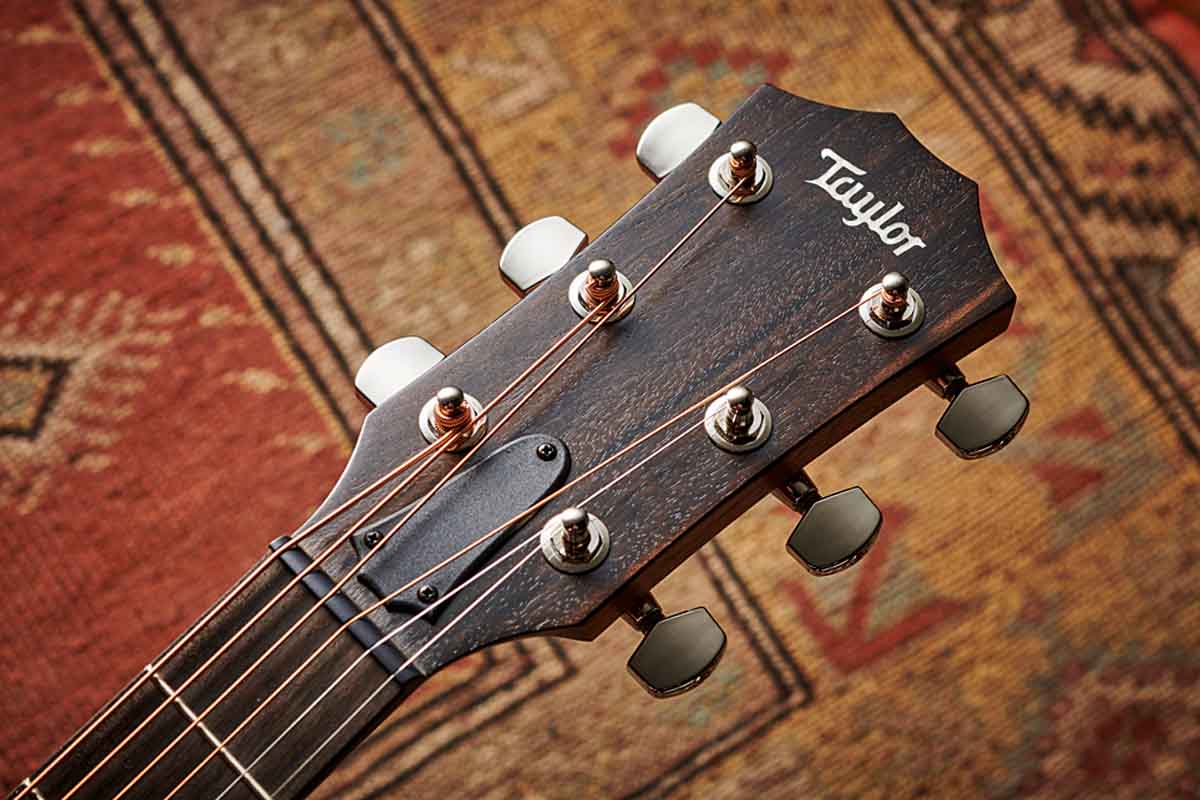

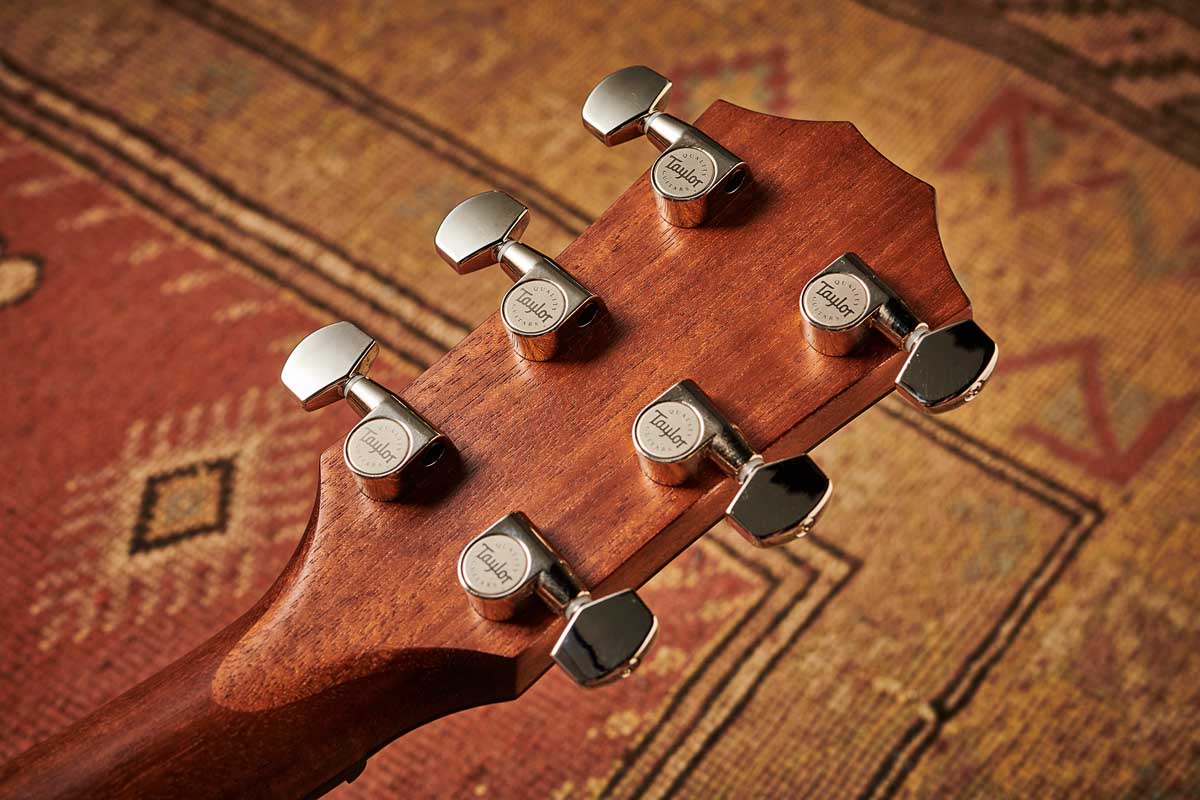
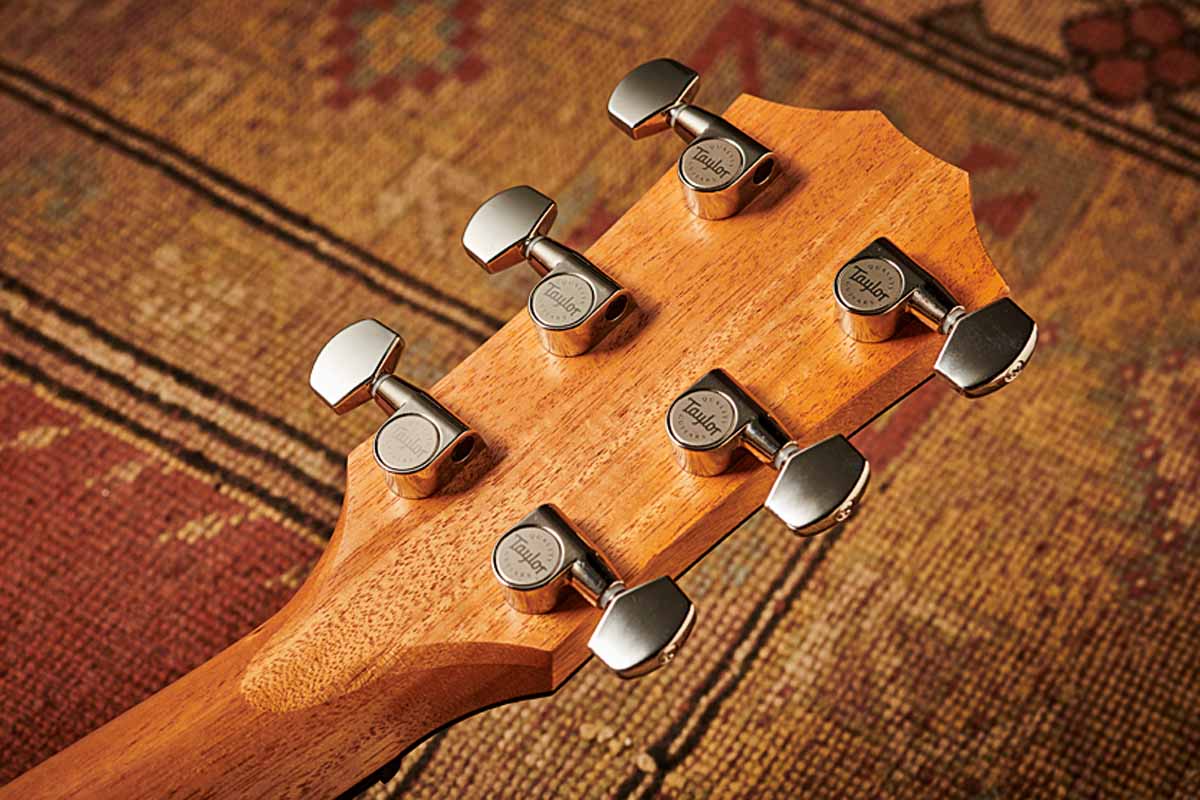
Feel & Sounds
With their stocky waist and slope-shouldered styling the ADs’ Grand Pacific shape puts us in mind of traditional classical guitar designs – or perhaps Lowden’s similarly fulsome outline.
Size wise, at 508mm (20 inches) long, 406.4mm (16 inches) wide and 117.5mm (4.63 inches) deep, they’re broadly dreadnought sized so are great for playing both standing or seated.
The lack of binding means Taylor can slightly round off the bodies’ edges for a little extra comfort, with the thin satin finish lending a drag-free feel to body and neck. With their 648mm (25.5-inch) scale length and 44.5mm (1.75-inch) nut width the guitars feel familiar under the fingers.
Both came identically, and perfectly, set up right out of the box, so you wouldn’t really know one from the other in that regard. The necks are Taylor’s legendarily comfortable shape – a shallow C-meets-V profile that barely deepens from 20mm at the 1st fret to 22mm at the 12th.
There’s tons of finger space at the nut for clear chording and the actions are low enough for easy barring further up the neck. However, a quick strum of the strings reveals each instrument’s inherent character.
While both have clear, rather ‘dry’ speaking voices, in the Blacktop with its spruce top and ovangkol back and sides one can detect a distinct Gibson dialect; it’s strident with sweet trebles and balanced mid- and low-end.
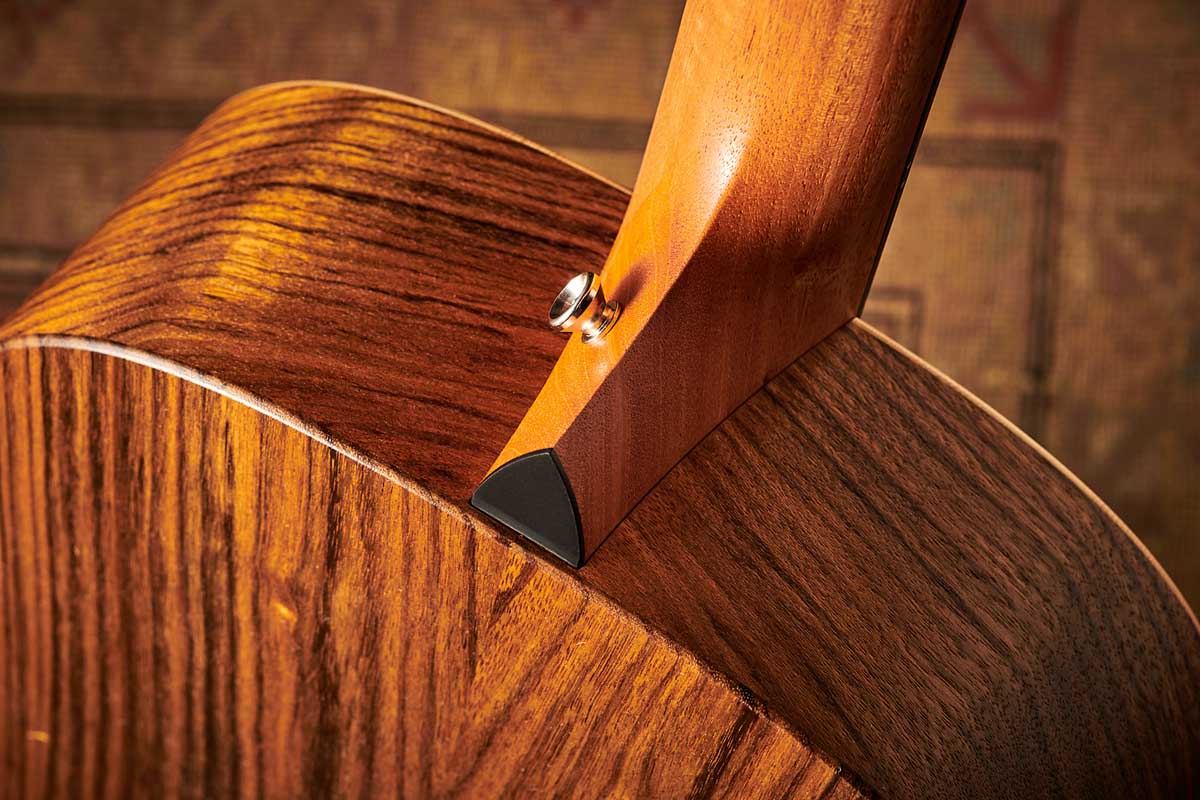
At home, whether picking or strumming chords, it’s beautifully balanced across the sonic range and would cover virtually all bases. Switching instruments to audition the AD27, it’s clear this is a different beast altogether.
Where the Blacktop offers that Gibson-like warmth, with rotundity and top-end sweetness in equal measure, the AD27’s sapele/mahogany combination draws in the top and bottom boundaries somewhat, leaving a much more mid-focused instrument.
Andy Powers has succeeded in his bid to unleash the tones of the past while retaining the impeccable build and stunning playability that have typified the Taylor ethic for almost 40 years.
Not surprisingly (and we would guess not unintentionally), this kicks it into the path of Martin’s all-mahogany 15 series – a range of instruments we have consistently admired. Now, this taming of the outer frequencies might seem to limit the guitar but in truth it merely lends a different singing voice.
While we might describe the Blacktop as ‘fruity’, the AD27 is perhaps more ‘nutty’. We could see it kicking out Delta blues, strumming along in a jug band or playing trad jazz. Open-tuned it will really wake up, and with thumb and fingerpicks could be the perfect ragtime vehicle. No, it won’t do as many things as well as the Blacktop but where it does excel it nails it.
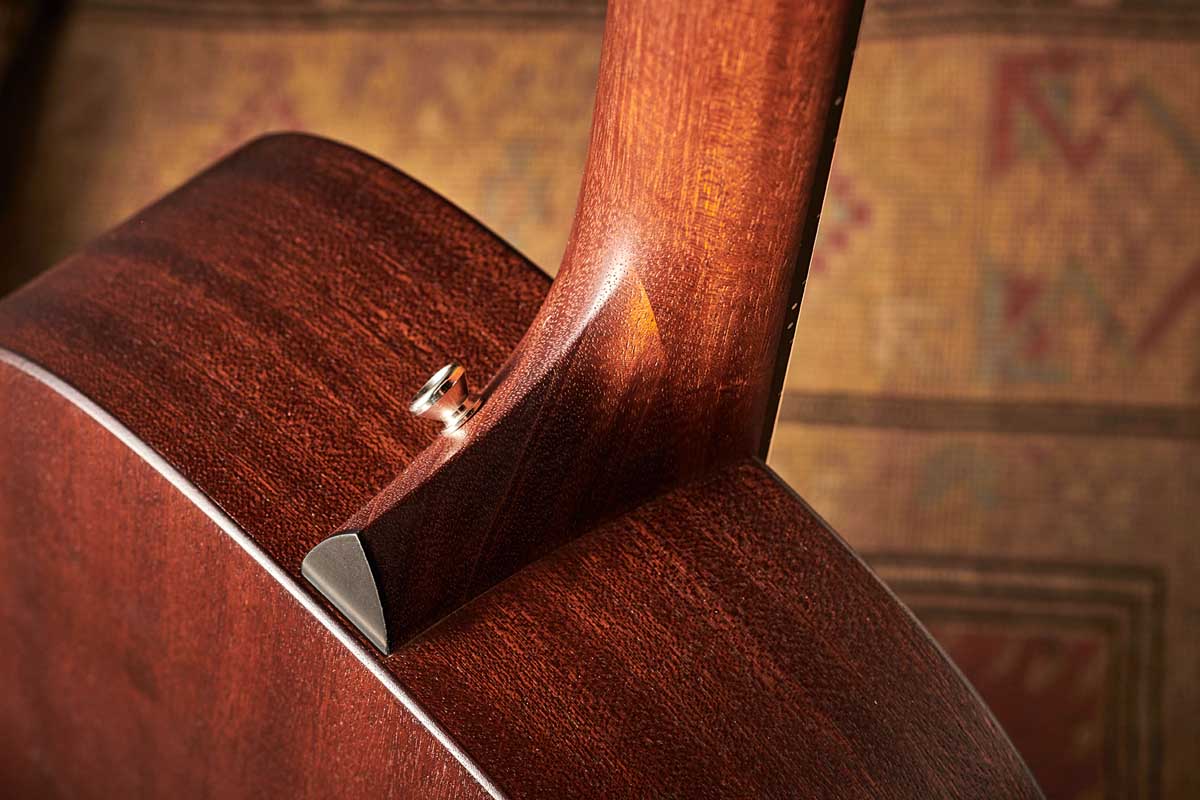
Verdict
Bob Taylor and Andy Powers’ intention for the American Dream series was that it might speak to lovers of Taylor guitars who might be struggling to find the £2,000 and upwards that its US-made instruments often command.
The secondary aim was to evoke the tones of the early recorded acoustic guitars – many of which were Gibson or Martin. The choice of solid timbers such as ovangkol, sapele and eucalyptus, along with the V-Class bracing system and round-shouldered Grand Pacific body shape, have ensured that these guitars are different to what we’ve generally come to expect from Taylor.
It’s easy to spit out adjectives such as ‘organic’, earthy’ or ‘characterful’ but in truth they work extremely well when offering up an impression of what these guitars sound like – certainly compared to Taylor’s usually pristine palette of tones.
Pin us down and we’d offer that the ovangkol/spruce AD17 Blacktop sits within the Gibson umbrella of sounds, whereas the sapele/mahogany AD27 sings with a voice more akin to Martin’s mahogany-topped range.
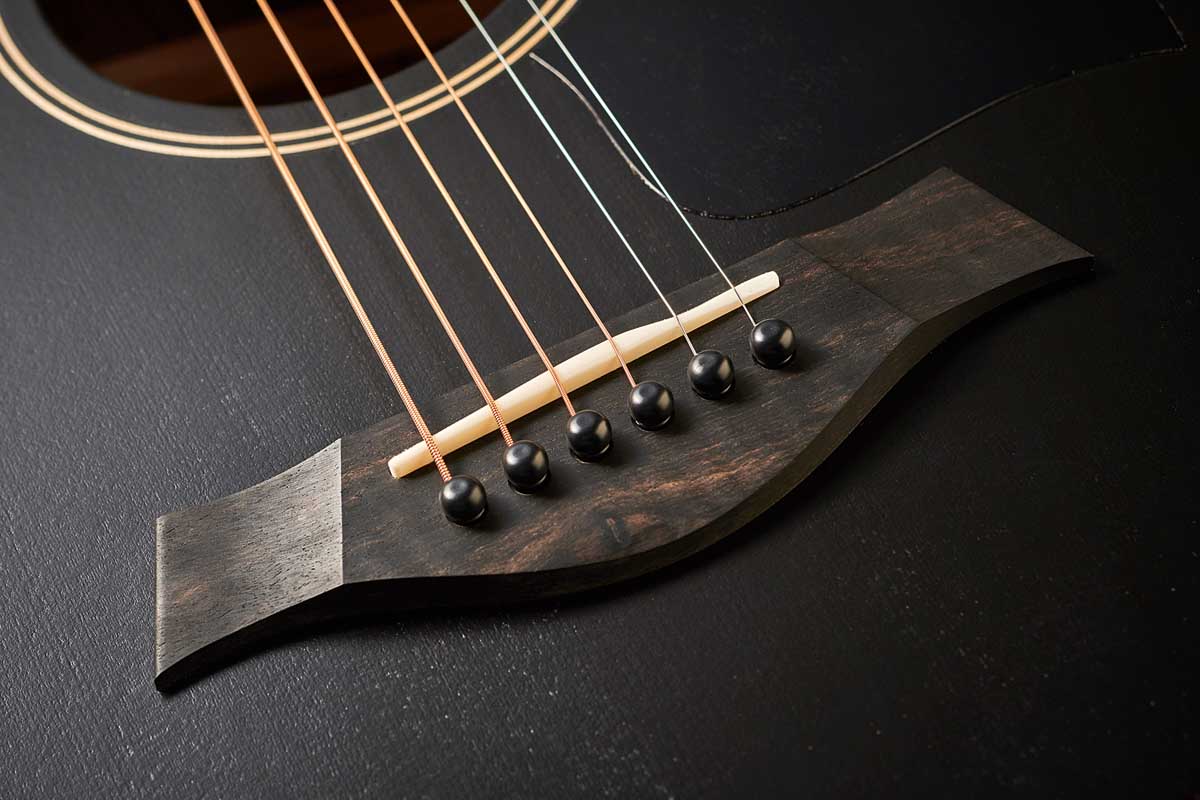
That said, these instruments don’t feel like they’ve crossed unspoken boundaries for Taylor, merely that they’ve pushed a bit further down the path already trodden by the GS Mini and others.
Andy Powers has succeeded in his bid to unleash the tones of the past while retaining the impeccable build and stunning playability that have typified the Taylor ethic for almost 40 years.
At around one-and-a-half grand they’re still not cheap (get the ‘e’ version as they are only a smidgen more in real terms), and yet your money brings you two singular but vibey, vintage-toned acoustics with one of the most respected modern brands on the headstock. Living the dream indeed!
Spec
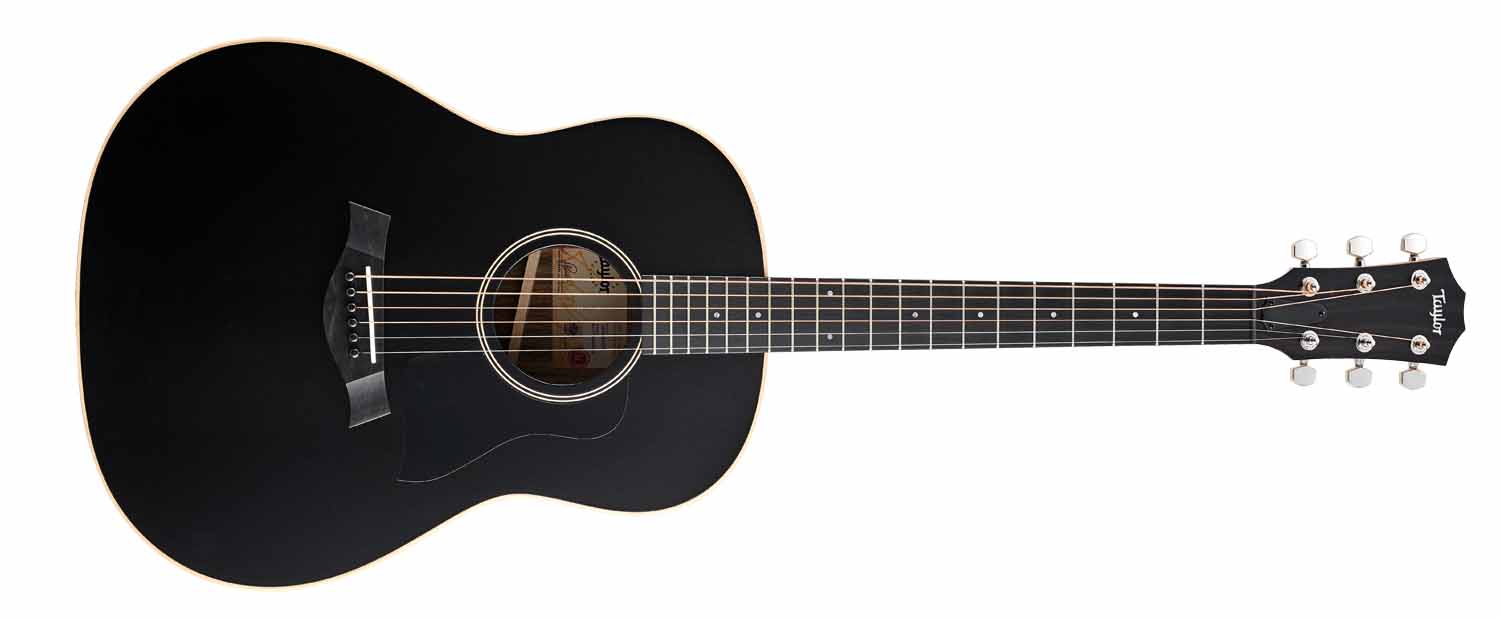
- PRICE: $1,499 / £1,715 (inc soft case)
- ORIGIN: USA
- TYPE: 14-fret Grand Pacific acoustic
- TOP: Solid spruce with revealed edges and V-Class bracing
- BACK/SIDES: Solid ovangkol
- MAX RIM DEPTH: 117.5mm
- MAX BODY WIDTH: 406.4mm
- NECK: Mahogany
- SCALE LENGTH: 648mm (25.5”)
- TUNERS: Schaller style, individual sealed
- NUT/WIDTH: Black Tusq, 45.4mm
- FINGERBOARD: Eucalyptus, unbound, with 4mm acrylic dot inlays
- FRETS: 20, medium
- BRIDGE/SPACING: Eucalyptus with compensated Micarta saddle/56mm
- ELECTRICS: None
- WEIGHT (kg/lb): 2/4.4
- OPTIONS: Electro version available, the AD17e Blacktop ($1,699 / £1,919)
- RANGE OPTIONS: The American Dream AD17 (£1,619), with electro system ($1,599 / £1,835), has the same spec as the AD17 Blacktop but with natural satin finish top. Also see AD27 (as reviewed)
- LEFT-HANDERS: No
- FINISHES: Clear satin unbuffed with Blacktop
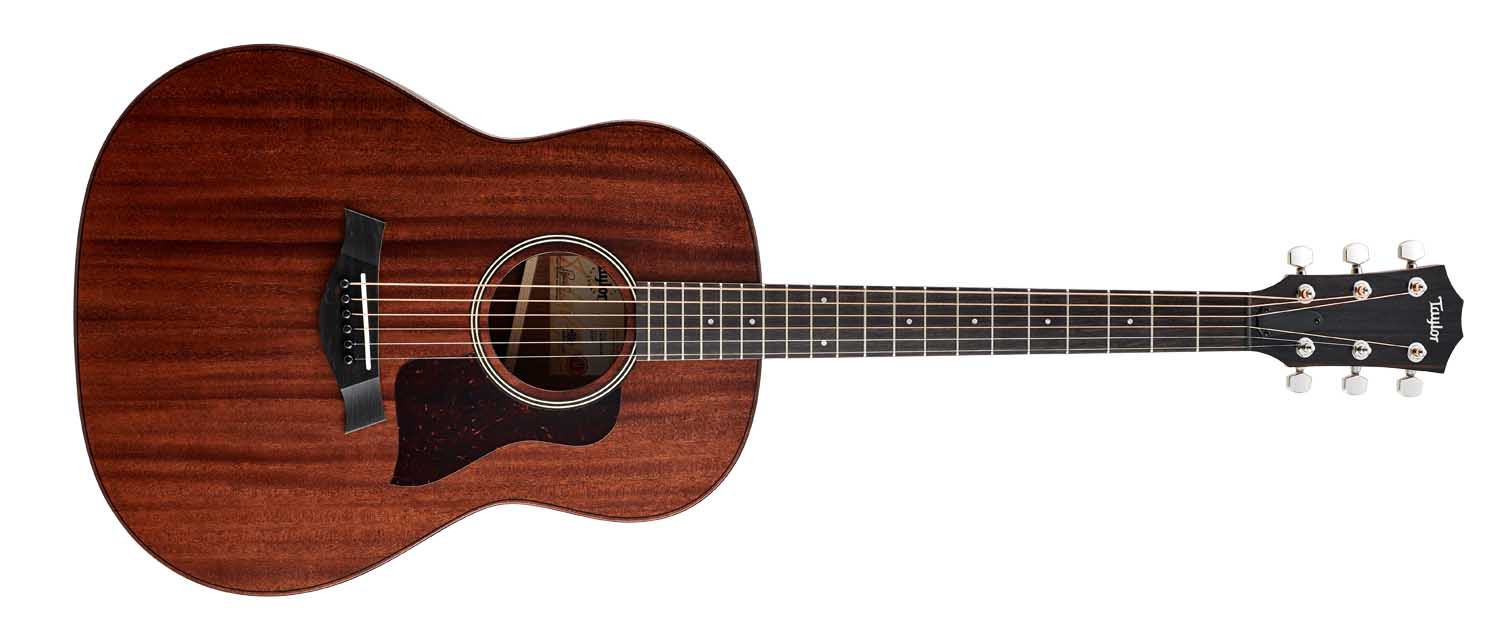
- PRICE: $1,399 / £1,619 (inc soft case)
- ORIGIN: USA
- TYPE: 14-fret Grand Pacific acoustic
- TOP: Solid mahogany with V-Class bracing
- BACK/SIDES: Solid sapele
- MAX RIM DEPTH: 117.5mm
- MAX BODY WIDTH: 406.4mm
- NECK: Mahogany
- SCALE LENGTH: 648mm (25.5”)
- TUNERS: Schaller style, individual sealed
- NUT/WIDTH: Black Tusq, 45.4mm
- FINGERBOARD: Eucalyptus, unbound, with 4mm acrylic dot inlays
- FRETS: 20, medium
- BRIDGE/SPACING: Eucalyptus with compensated Micarta saddle/56mm
- ELECTRICS: No
- WEIGHT (kg/lb): 2/4.4
- OPTIONS: Electro version available, the AD27e ($1,599 / £1,835)
- RANGE OPTIONS: See AD17 and also AD17 Blacktop (as reviewed)
- LEFT-HANDERS: No
- FINISHES: Clear satin with Urban Sienna stain
- CONTACT: Taylor Guitars
In the late '70s and early '80s Neville worked for Selmer/Norlin as one of Gibson's UK guitar repairers, before joining CBS/Fender in the same role. He then moved to the fledgling Guitarist magazine as staff writer, rising to editor in 1986. He remained editor for 14 years before launching and editing Guitar Techniques magazine. Although now semi-retired he still works for both magazines. Neville has been a member of Marty Wilde's 'Wildcats' since 1983, and recorded his own album, The Blues Headlines, in 2019.
The heaviest acoustic guitar ever made? Two budding builders craft an acoustic entirely from concrete because they “thought the idea was really funny”
“For years, the only 12-string acoustics I got my hands on, the necks always pulled off after a bit. I earned a lot of money replacing them!” Why one of the UK’s most prolific luthiers is a bolt-on acoustic die-hard












